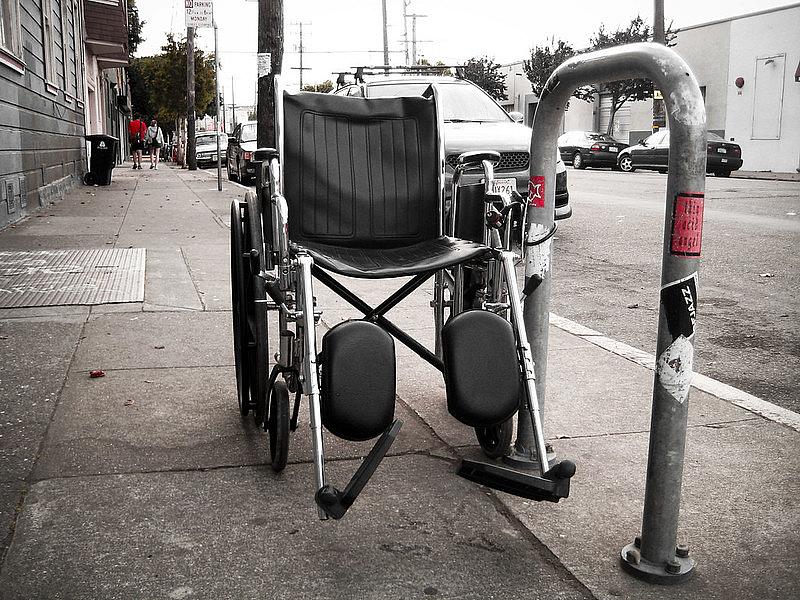The Bay Area’s unhoused population is getting older: How can cities and counties help?

(Photo by Ariel Dovas via Flickr/Creative Commons)
Last year my family had to move my 89-year-old grandmother into a small assisted living facility. She was diagnosed with dementia, and on top of mobility issues, she couldn’t live by herself anymore. In her new home, she’s taken care of by nurses who are trained to deal with memory loss. Her bathroom is outfitted with special handles, so she doesn’t slip getting in and out of the tub. The space has a wheelchair ramp, and she gets her own walker.
When many of us think of an aging, older adult population, we may imagine people living this way –– in retirement communities, long-term care facilities, or nursing homes: spaces and care designed to meet an elderly person’s specific needs. But if you’re experiencing homelessness in San Francisco, aging this way likely isn’t an option for you, even if you receive a housing voucher or a spot in a shelter or housing lottery. In a city where more than 30% of homeless people are older than 50, there’s no specialized care for older unhoused folks. If you have dementia, incontinence, or mobility issues, you would likely qualify for the same type of care or shelter system as someone who may be 20 years younger. Many of the solutions designed to address homelessness in previous decades were not designed to address problems of aging.
Advocates and researchers say this is a problem because the unhoused population in San Francisco, the Bay Area, and the nation is only getting older. UCSF researcher Margot Kushel estimates that half of homeless adults in the United States are over the age of 50, compared to 11% back in 1990. And even if someone isn’t considered “elderly,” research suggests that homeless older adults typically confront the same health problems someone 25 years older would experience.
Dr. Joshua Bamberger, a UCSF physician who cares for individuals experiencing homelessness, told me San Francisco's “permanent supportive housing ... is completely inadequate to serve people who are getting older.”
My series of radio stories for the 2021 California Fellowship will investigate this issue and explore solutions. I’ll start by looking at what’s happening in San Francisco. For decades, the city has struggled to help its entire unhoused population, not just older adults. Advocates who have worked in this sphere for decades wonder why things haven’t gotten much better. I’ll talk to them, and to people working in the city’s Department of Homelessness and Supportive Housing. But most importantly, I’ll try to spend time getting to know people experiencing homelessness as seniors and capture their voices as much as possible.
What will make these radio stories different from pieces that have raised the issue before will be a focus on solutions, particularly what has been done in neighbouring counties.
For instance, San Mateo County has found ways to work with Medicare to help provide care and beds for its homeless elders. And in Oakland, Kaiser helped house 500 homeless seniors alongside the organization Bay Area Community Services. I’d like to shadow someone who was housed during this effort, and illustrate the impacts two years later. Did the program work? Why do we need to go outside the city and county to find a program with such promise? And what can San Francisco and other cities learn from these successes and challenges?
I’m excited to take a solutions journalism approach to one of the biggest issues facing the Bay Area today. My research, reporting, sound-gathering and writing will result in a three-part radio series looking at the obstacles and answers in caring for an aging homeless population in San Francisco, San Mateo County and Oakland. And while I will talk to homeless activists, researchers, lawmakers, physicians, nurses and street medics, I’d love for these stories to be told primarily through the voices of those experiencing homelessness in the Bay Area.
